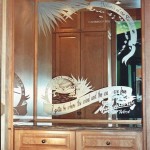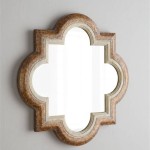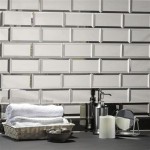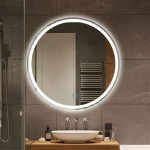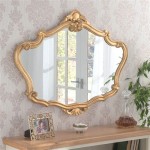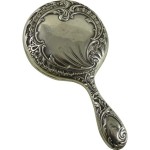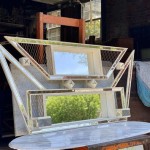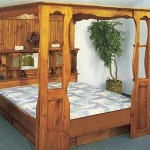What To Use to Hang Mirrors on the Wall
Hanging a mirror can dramatically enhance a room's aesthetics and functionality. However, selecting the appropriate hanging hardware is crucial for safety and stability. This article explores various options available for hanging mirrors, considering factors like mirror size, wall type, and desired aesthetic.
D-Rings and Wire: A classic and versatile method, D-rings are attached to the back of the mirror frame, and wire is strung between them. This creates a loop for hanging on a wall hook or nail. This method is suitable for lightweight to medium-weight mirrors. Heavier mirrors may require heavier-gauge wire and more robust D-rings. Proper spacing of the D-rings is essential for balance and preventing tilting.
Heavy-Duty Picture Hangers: These hangers feature angled nails or hooks designed to support heavier items. They come in various weight capacities and are ideal for medium to large mirrors. Some versions include a built-in level for easy installation. Users should carefully check the weight limit on the packaging to ensure it exceeds the mirror's weight.
French Cleats: This system employs two interlocking pieces of wood, one attached to the wall and the other to the back of the mirror. The angled design allows the mirror to hang securely and flush against the wall. French cleats offer excellent stability and are suitable for heavy mirrors, often a preferred choice for oversized or antique mirrors.
Mirror Mounting Clips: These clips are designed specifically for securing mirrors to the wall. They typically come in sets of four or more and are screwed directly into the wall, gripping the edges of the mirror. This method offers a clean, frameless look and is suitable for mirrors without pre-installed hanging hardware. It’s crucial to ensure the clips are appropriately sized for the mirror's thickness and weight.
Adhesive Strips and Hooks: For smaller, lightweight mirrors, adhesive strips or hooks can provide a damage-free hanging solution. These products use strong adhesive to stick to both the wall and the mirror back. However, it's important to check the weight limitations and ensure the wall surface is suitable for adhesive application. Smooth, non-porous surfaces work best. This method is generally not recommended for valuable or antique mirrors.
J-Hooks: These hooks are shaped like a "J" and are screwed directly into the wall. They are often used with mirrors that have pre-installed keyhole slots on the back. J-hooks offer a secure and low-profile hanging method but require precise placement to align with the keyholes.
Understanding Wall Types: The type of wall significantly impacts the choice of hanging hardware. Drywall requires different anchors than brick or concrete. Hollow walls may necessitate the use of toggle bolts or molly bolts for secure anchoring, especially for heavier mirrors.
Drywall Anchors: These small plastic or metal inserts are inserted into pre-drilled holes in drywall to provide a more secure grip for screws. Different types of drywall anchors exist, each suited for specific weight capacities. Plastic expansion anchors are common for lighter items, while self-drilling metal anchors are suitable for heavier loads.
Toggle Bolts: These anchors are ideal for hollow walls. They consist of a bolt and a spring-loaded toggle that expands behind the wall, creating a strong hold. Toggle bolts are suitable for heavy mirrors and other wall-mounted objects.
Molly Bolts: Similar to toggle bolts, molly bolts are also suitable for hollow walls. They create a secure anchor by expanding metal wings behind the drywall. Molly bolts are known for their high weight capacity.
Brick and Concrete Anchors: These specialized anchors are designed for use with masonry materials. They typically require drilling a pilot hole and then hammering the anchor into place. Concrete screws can also be used for securing objects to concrete walls.
Safety Considerations: When hanging any mirror, especially a heavy one, safety should be paramount. Always use appropriate hardware for the mirror's weight and the wall type. Ensure the chosen hanging method is properly installed and tested before hanging the mirror. For very large or heavy mirrors, professional installation is recommended.
Aesthetic Considerations: While functionality is crucial, the aesthetic impact of the chosen hanging method should also be considered. For a minimalist look, mirror clips or adhesive strips might be preferred. D-rings and wire can offer a more traditional appearance. The chosen hardware should complement the mirror's frame and the overall room design.
Preparation and Planning: Before attempting to hang a mirror, careful planning is essential. Measure the mirror's dimensions and weight. Determine the desired location on the wall and check for any obstructions behind the wall, such as electrical wiring or plumbing. Gather the necessary tools and materials, including a level, measuring tape, drill, and appropriate anchors and screws. Proper preparation will streamline the installation process and ensure a successful outcome.
:strip_icc()/ScreenShot2022-04-28at1.12.19PM-e055476c70c6438585fa7c5cd531edcf.png?strip=all)
4 Easy Ways To Hang A Heavy Mirror

Do S And Don Ts For Hanging Your Mirrors Artwork The Seattle Times

How To Hang A Heavy Mirror Or Picture True Value

How To Hang A Large Or Heavy Mirror
How To Hang A Heavy Mirror On Drywall Without Damaging It Or The Wall Quora

How To Hang A Frameless Mirror On The Wall With Pictures

How To Hang A Heavy Mirror The Home Depot

How To Hang A Very Heavy Picture Or Mirror The Best

How To Hang A Heavy Full Length Leaner Mirror On The Wall House Of Hepworths

How To Hang A Heavy Mirror

